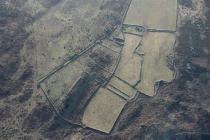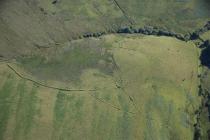Gellir lawrlwytho cynnwys at ddefnydd anfasnachol, megis defnydd personol neu ar gyfer adnoddau addysgol.
Ar gyfer defnydd masnachol cysyllwch yn uniongyrchol gyda deilydd yr hawlfraint os gwelwch yn dda.
Read more about the The Creative Archive Licence.
Disgrifiad
Skomer Island (a Scandinavian word which describes the cloven shape of the island) ranks among the finest archaeological landscapes in Britain. Its comparative isolation from the mainland, and the limited impact of recent agriculture, has meant that considerable tracts of Skomer have not been ploughed or built on since prehistoric times. It is now famed for its wildlife and ecosystems, but on the unploughed parts of the island small huts, animal pounds, farmsteads and elaborate systems of fields survive from the Bronze and Iron Ages to show us the ways in which our prehistoric ancestors lived and worked the land. A detailed survey by John Evans, published in 1990, together with earlier survey work by W F Grimes represent our main source of information.
The soils on Skomer are known to be fertile and were farmed in recent centuries. When prehistoric founding communities first made the crossing to Skomer it is thought the island would have presented a favourable habitat, with a light covering of oak woodland, an equable climate, and a number of freshwater springs and streams. Prehistoric settlements chiefly survive on the peripheries of the island. In the central area fields dating from the eighteenth century, and farmed until 1948, have largely obliterated any traces of earlier structures, in a pattern repeated endless times across mainland Pembrokeshire. Traces of life are abundant within these small hamlets. Mounds of burnt stone close to houses are probably evidence for cooking sites, whilst funnel entrances to some farms, and isolated circular or D-shaped enclosures, are tangible evidence of stock management. Indeed, prehistoric fields, originally used for grazing sheep, cattle and even pigs, radiate outwards from the hamlets and their outcrops. A mixed economy of livestock and cereals would have been supplemented with coastal and marine resources: sea-birds and their eggs, seals and seaweed, plus a range of shellfish and sea-fish. In all, the Skomer families would have enjoyed a varied and nutritious diet. Groups of stone cairns along more remote coastal headlands may be burial monuments, or evidence for organised field clearance where they occur closer to farms. Sian Rees has noted that the Harold Stone stands as a prominent marker on the skyline as one approaches by sea. It may have been used as a transit marker to clear submerged dangers by those arriving from across the sea, although the possibility remains that it is a ritual standing stone. The richness and complexity of Skomer's archaeology only becomes fully visible from the air in winter or spring, when low ground vegetation and raking sunlight across this flat moorland table combine to reveal every bank and hollow before the growth of bracken. In late spring the patterns of fields and huts are enlivened by a carpet of bluebells, covering the whole island in purple and blue.






Oes gennych chi wybodaeth ychwanegol am yr eitem hon? Gadewch sylwad isod
Sylwadau (0)
Rhaid mewngofnodi i bostio sylw